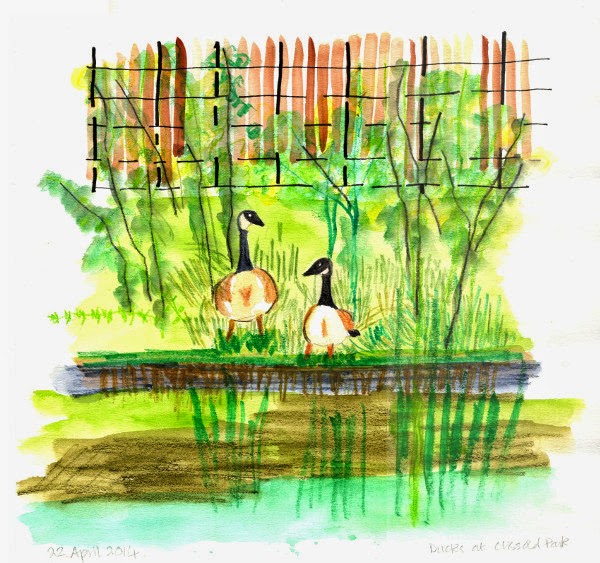 |
| Cold war Britain set against our contemporary London skyline |
We finally got around to visiting this exhibition only three weeks before it closes having talked about going for what seems for ever. The effort of getting there was well rewarded with a very thought provoking series of exhibits curated by seven contemporary artists who between them have cast their eyes (and ears) over the British cultural landscape from the Cold War until the present day.
History is now is on at the
Hayward Gallery and has been staged during the run-up to the General Election on 7 May. Many of the pieces of artwork are responses to the politics of the time in which they were made and often make for disturbing viewing as memories are re-awakened and then re-examined. The seven artists are John Akomfrah, Simon Fujiwara, Roger Hiorns, Hannah Starkey, Richard Wentworth and Jane and Louise Wilson and I think they curated roughly a decade each.
The rocket above, on the sculpture terrace, was the only item we could photograph and I noticed in the accompanying notes that it was built between 1955-56 which was the same time I was
in utero so you could say this exhibition covers my entire lifetime. On entering the exhibition you find yourself more-or-less in present day Britain and as you work your way through the galleries you travel back through the decades until you reach the 1950s.
I found I had conflicting feelings towards many of the items that I looked at during this visit. For example I found the rocket, which is a piece of military hardware and a weapon of destruction, oddly positioned on a sculpture terrace. I imagined visitors at the Private View politely circling it with glasses of champagne in their hands.
Earlier on in the exhibition I was intrigued by the costume designed by Consolata Boyle for Meryl Streep in
The Iron Lady, 2011. The Iron Lady in question was our Prime Minister, Margaret Thatcher. As I looked into the case containing this outfit I was reminded of the time I visited Grantham Museum after the 'great' lady had died and gazed in a similar way at her Prime Ministerial blue, silk suit that was displayed on a mannequin. I noted that she was rather taller than me and bulkier too but she was well proportioned so it didn't show and the silk was a beautiful blue. I remember being surprised that I could admire anything about Mrs Thatcher since I could never be described as supporter of the Conservative party or her values in particular.
Elsewhere in another gallery I was again taken back in time to 1982 when I looked at the photos of women protesting at Greenham Common against the government's decision to allow American cruise missiles to be based there. I remembered going there on a day trip by coach, at the behest of one of my colleagues, to join in the
Embrace the base event where 30,000 women joined hands around the base, sang songs and lit candles. At the end of the day I went back to my life in London and some of the women resolutely stayed on in the camp continuing their protest.
And finally, I took in the galleries devoted to the BSE epidemic also known as Mad Cow Disease (1989-1990) and the Foot and Mouth outbreak in 2001 which caused a serious crisis in tourism and agriculture. We began with examples of scrapie in sheep which is a fatal, degenerative disease of the central nervous system and is caused by a prion and related to BSE. There is film footage of a young Damien Hurst talking about his fascination with animals which began with visits to the Natural History Museum and a couple of exhibits of his work which make me feel squeamish. At this point in the proceedings I thought I would be very lucky indeed to avoid developing some ghastly disease and consoled myself with thoughts of coffee and cake.
If you'd like to put yourself through an emotional wringer and see how Britain has changed over the years the exhibition runs until Sunday 26 April 2015.





















































